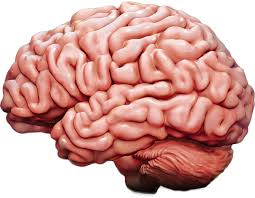How the brain’s little blue dot regulates your sleep
The locus coeruleus is gaining attention as a key area of research due to its vital role in regulating attention and sleep.
Anyone who has struggled with insomnia knows the frustration of trying to silence an overactive mind. The idea of a mental “dimmer switch” may not be as far-fetched as it seems. Neuroscientists now view wakefulness as a continuum controlled by a complex brain network, with the locus coeruleus—a small cluster of neurons in the brainstem—at its core. This region, named the “blue dot” due to its distinctive color from norepinephrine production, influences arousal levels and attentiveness.
Previously thought to be inactive during sleep, recent findings indicate that the locus coeruleus maintains low but intermittent activity, potentially influencing sleep depth. Understanding this function could lead to improved treatments for sleep disturbances linked to anxiety.
The Brain’s Gear System
Located in the brainstem, the locus coeruleus contains about 50,000 neurons—a tiny fraction of the brain’s total. Despite being noted by Félix Vicq d’Azyr in the 18th century, it remained overlooked until the 20th century, when researchers discovered that norepinephrine, the neurotransmitter it produces, plays a key role in brain signaling.
Norepinephrine increases neuron excitability, enhancing communication between brain regions. However, different neurons respond to varying norepinephrine levels, meaning locus coeruleus activity shifts our cognitive state:
- Gear 1 (Low Activity): A relaxed state, where attention drifts and thoughts wander.
- Gear 2 (Moderate Activity): Focused but balanced, ideal for cognitive tasks.
- Gear 3 (High Activity): Heightened alertness and stress response, making it harder to concentrate.
Factors like circadian rhythms affect which “gear” we operate in, with locus coeruleus activity generally peaking during the day and dropping at night.
Nighttime Vigilance & Sleep Regulation
While quietest during sleep, the locus coeruleus never fully shuts down. Research from Anita Lüthi at the University of Lausanne shows that intermittent activity during non-REM (NREM) sleep may maintain vigilance, helping organisms stay alert to threats. Conversely, REM sleep—linked to dreaming and memory processing—occurs when the locus coeruleus is at its lowest activity, aiding the transition into this deep sleep phase.
Experiments suggest that stress can heighten locus coeruleus activity at night, leading to fragmented sleep. This insight may explain why anxiety disrupts rest and suggests potential treatment approaches.
Finding Mental Calm
New research is exploring ways to regulate locus coeruleus activity for better sleep. A South Korean team, for example, is testing a forehead-stimulating headset that temporarily suppresses its activity, though its effectiveness against insomnia remains uncertain.
In the meantime, simple behavioral adjustments can help. Overstimulation before bed—such as screen exposure or forcing oneself to stay awake—can push the brain into a high-alert state, making sleep elusive. Practicing good sleep hygiene, such as avoiding screens and unwinding naturally, can be beneficial.
Since the locus coeruleus is part of the autonomic nervous system, which controls involuntary functions like heart rate and breathing, certain activities can influence it. Exercise, for instance, can boost wakefulness by activating the sympathetic nervous system, while gentle stretching or controlled breathing can activate the parasympathetic nervous system, promoting relaxation.
Techniques like meditation, mindfulness, and breathing exercises have been shown to reduce sleep onset time and improve sleep quality. While we may not have a literal “off switch” for the mind, understanding the brain-body connection can help us achieve deeper, more restorative sleep.


Leave a Reply